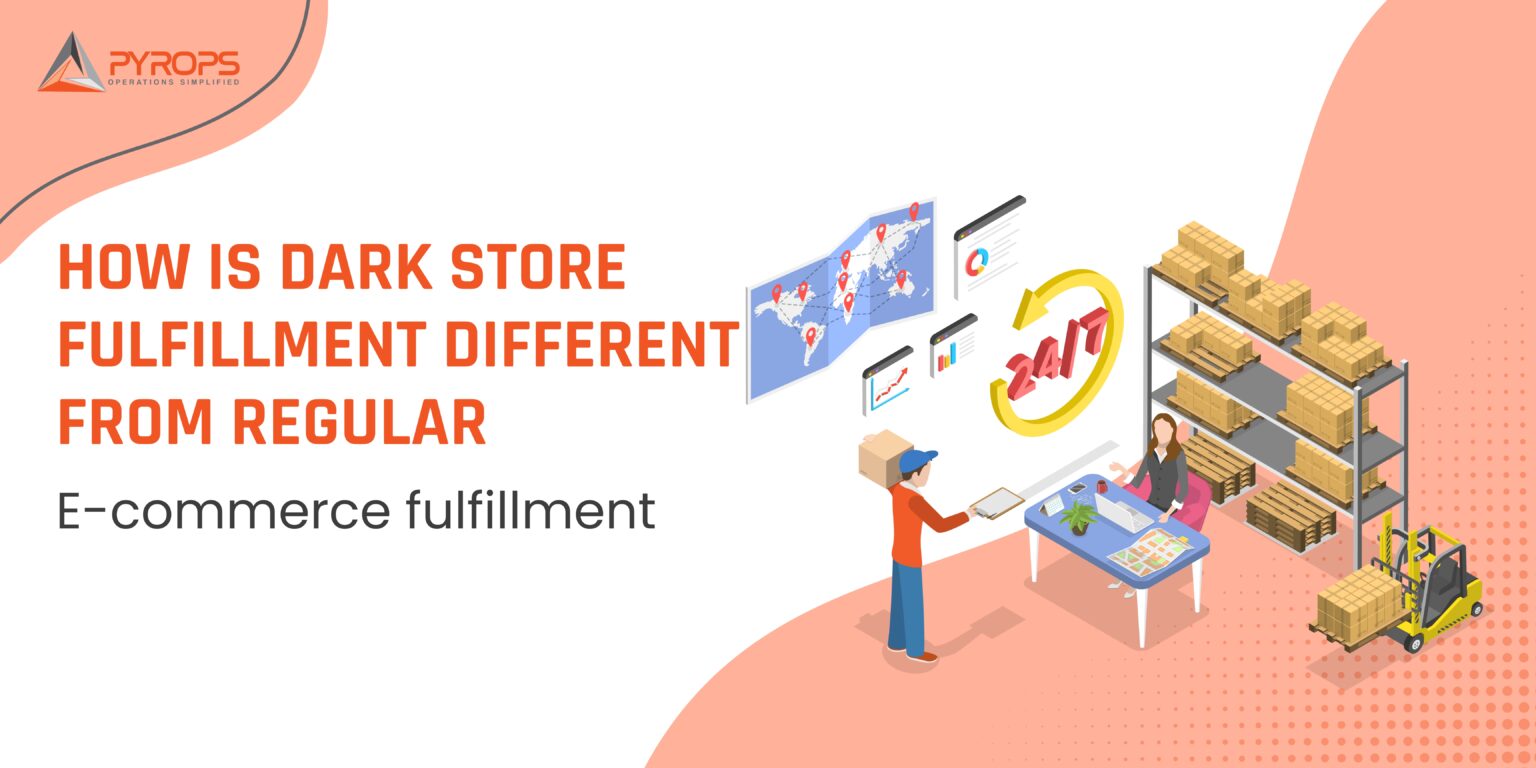In the domain of ecommerce warehouse management, two distinct models have emerged to accommodate the evolving preferences of customers: Traditional Ecommerce Warehouse Management System from conventional distribution centers and Hyperlocal Ecommerce Warehouse Management System from specialized, hyperlocal warehouses. These two approaches showcase significant differences in various critical aspects, each intricately designed to fulfill distinct customer requirements and adapt to market dynamics. Let’s explore the disparities between these ecommerce warehouse management types to gain a deeper understanding of their unique features.
What is Ecommerce Warehousing?
E-commerce warehousing pertains to the storage, organization, and fulfillment of goods within a specialized facility explicitly crafted to facilitate online retail operations. Within the realm of e-commerce, the effectiveness of the warehouse management system is pivotal in the supply chain, guaranteeing the timely and accurate storage, organization, and shipping of products to customers.
In the context of an e-commerce warehouse, the focus is on employing efficient warehouse management systems (WMS) and specialized software designed for e-commerce. These tools play a crucial role in organizing the seamless flow of goods, ensuring optimal inventory control, and expediting order fulfillment to meet the demands of online retail operations.
Key features of e-commerce warehousing include:
- Order Fulfillment: WMS for ecommerce are equipped to handle the picking, packing, and shipping of individual customer orders. This involves locating products within the warehouse mgmt software, packaging them securely, and arranging for their timely delivery.
- Inventory Management: Effective e-commerce warehouse management software involves meticulous tracking and management of inventory levels. This helps prevent stockouts, overstock situations, and enables accurate real-time visibility into the availability of products.
- Technology Integration: Many e-commerce warehouses leverage advanced technologies, such as Warehouse Management Systems (WMS) and automation tools, to streamline operations, enhance accuracy, and improve overall efficiency.
- Location Considerations: Warehouses management system e-commerce are often strategically located, considering factors like proximity to major markets, transportation hubs, and customer bases. This helps in reducing shipping times and costs.
- Scalability: WMS software for ecommerce must be adaptable to handle fluctuations in demand, especially during peak seasons or promotional events. Scalability ensures that the warehouse can efficiently manage varying order volumes.
- Returns Processing: E-commerce warehouse management includes processes for handling product returns, which is a critical aspect of online retail. Efficient return processing contributes to customer satisfaction and inventory management.
Overall, the e-commerce warehouse management system is a specialized form of logistics infrastructure designed to meet the unique challenges and demands of online retail, aiming to provide customers with a seamless and satisfactory shopping experience.
What is a dark warehouse?
Dark warehouses, equipped with Warehouse Management Systems (WMS) tailored for ecommerce, offer several advantages over traditional brick-and-mortar stores when it comes to fulfilling online orders. Typically situated in urban areas, these dark warehouses provide expedited delivery times. Their layouts and processes are precisely optimized for the efficient picking and packing of orders in the realm of warehouse fulfillment services.
Moreover, dark warehouses contribute to cost reduction strategies for retailers. By enabling the storage of more inventory in a confined space, they assist in curbing inventory costs. Additionally, labor costs can be minimized through task automation within the spectrum of warehousing and fulfillment services.
In essence, dark warehouses, supported by WMS software designed for ecommerce, emerge as a valuable asset for retailers of all scales seeking enhancements in their e-commerce fulfillment operations.
1. Warehouse Size:
Warehouse Fulfilment: Large, centralized distribution centers with substantial storage capacity.
Dark Store Fulfilment: Compact, local warehouses are often located in urban areas to facilitate quick deliveries.
2. Number of SKUs (Stock Keeping Units):
Warehouse Fulfilment: Typically offers a wide range of SKUs, catering to diverse product lines.
Dark Store Fulfilment: Limited SKUs, often focusing on a curated selection of fast-moving products.
3. Distance from Customer:
Warehouse Fulfilment: May involve shipping products across national or regional distribution centers, resulting in longer transit times.
Dark Store Fulfilment: Located within or near urban centers, ensuring hyperlocal proximity to customers for rapid deliveries.
4. Time Sensitivity:
Warehouse Fulfilment: While warehouse fulfillment operations are SLA-backed, there may be some flexibility in delivery timing or sequence.
Dark Store Fulfilment: It is highly time-sensitive, emphasizing fast deliveries to meet customer expectations, with SLAs often measured in hours.
5. Delivery Modes:
Dark Store Fulfilment: Often employs two-wheeler fleets, bicycles, or on-foot couriers optimized for quick, last-mile deliveries.
Warehouse Fulfilment: Utilizes larger delivery fleets, including trucks and vans, optimizing for cost-efficiency over speed.
6. Route Planning:
Dark Store Fulfilment: Route planning is critical to meet stringent SLAs, requiring precise coordination to ensure on-time deliveries.
Warehouse Fulfilment: While route planning is important in RF, there may be more flexibility in timing or sequence of deliveries due to broader service areas.
7. Returns:
Dark Store Fulfilment: Typically supports doorstep verification and returns, offering convenience and quick processing.
Warehouse Fulfilment: Returns often follow a more controlled and lengthier process due to centralized facilities.
8. Needs They Address:
Dark Store Fulfilment: Dark stores primarily address the need for immediate consumption and convenience, focusing on impulse buys and essential items like groceries, electronics accessories, or personal care products.
Warehouse Fulfilment: This fulfilment models serves a broader customer base, accommodating a wide range of products, including bulk goods, specialized equipment, and items with less time-sensitive demand.
Conclusion
While both warehouse fulfillment services and dark store fulfillment aim to meet customer demands, they do so in distinctive ways. Warehousing & fulfillment services leverages large warehouses to serve a diverse range of products over broader geographic areas, prioritizing cost-efficiency.
On the other hand, Dark Stores operate in smaller, urban-centric facilities, emphasizing speed and convenience for hyperlocal customers seeking immediate access to essential items. Understanding differences in fulfillment for ecommerce & dark stores is essential for businesses to tailor their fulfillment strategies to effectively meet the expectations of their target audiences.







